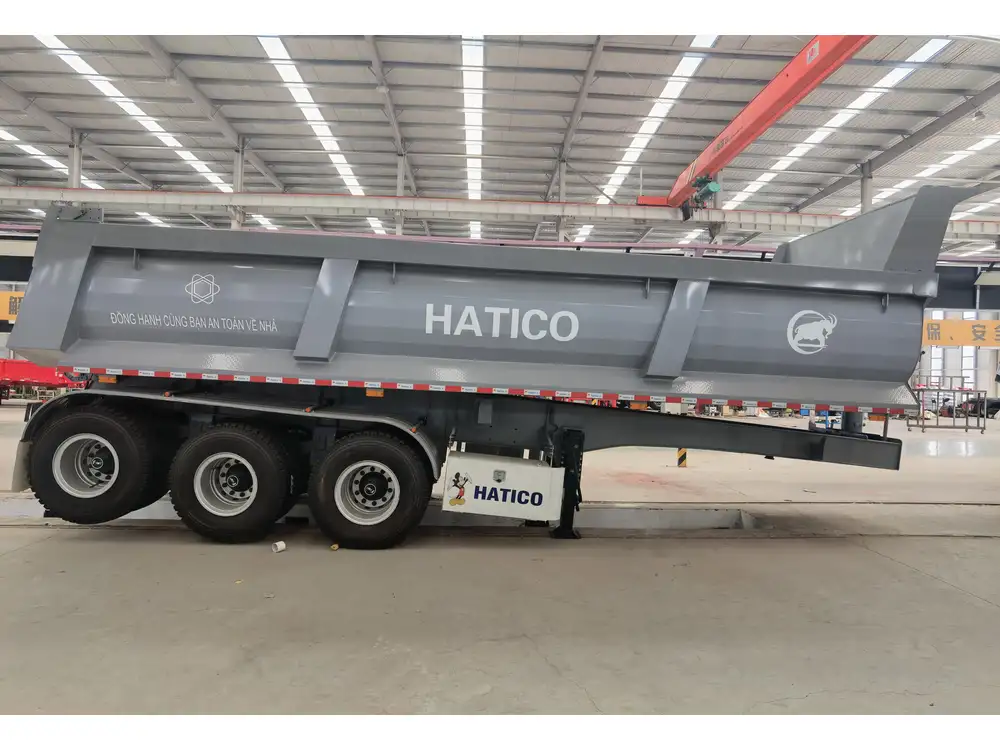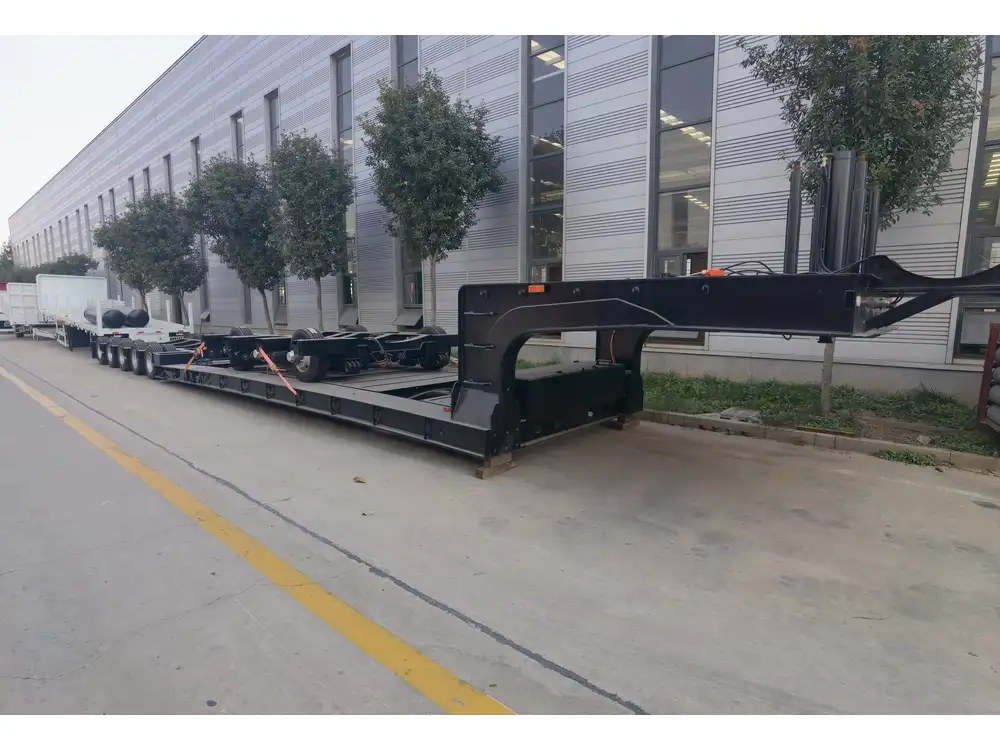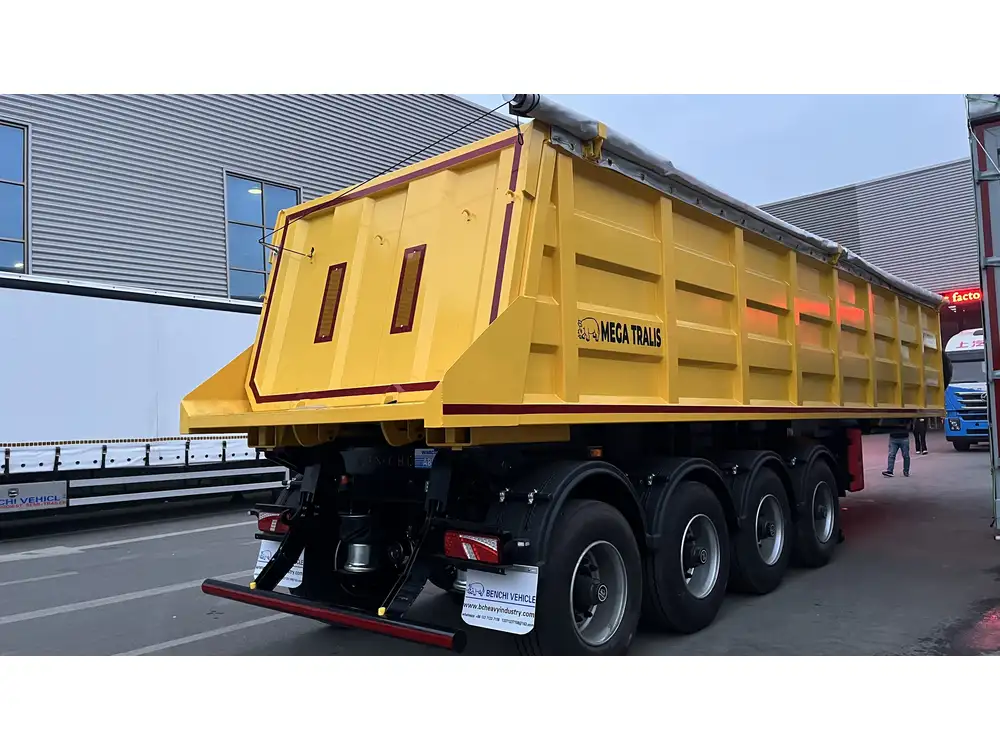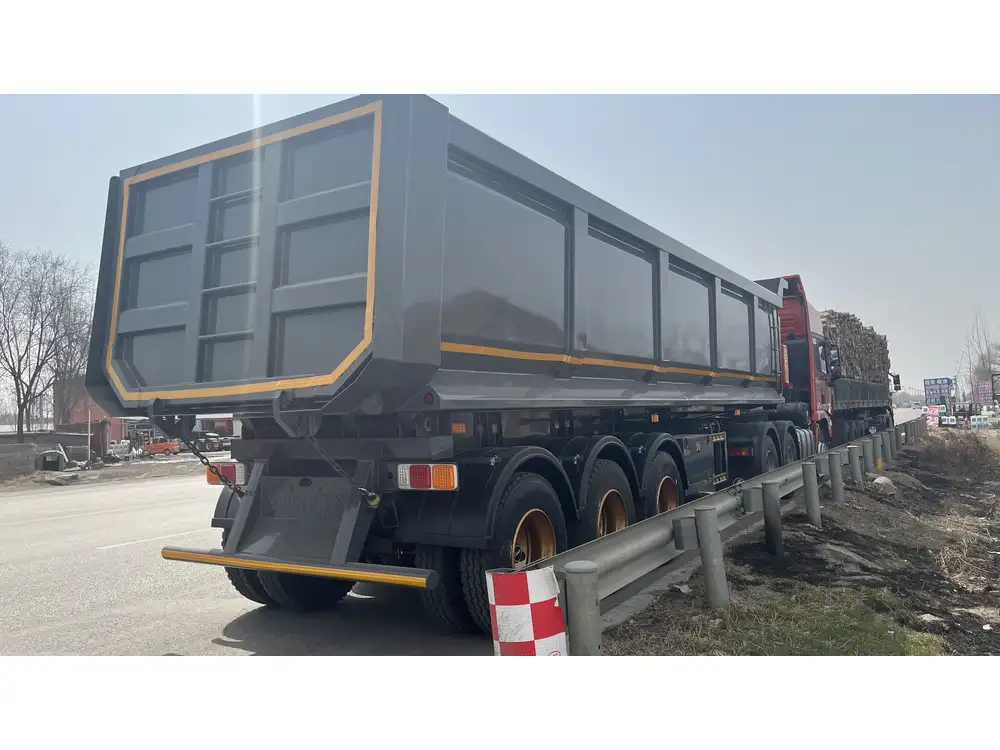Understanding Dump Trailer Design and Functionality
A dump trailer stands as a versatile and invaluable asset within the trucking and construction industry. Renowned for its ability to transport a variety of bulk materials—from gravel and sand to debris—the trailer’s efficiency largely hinges on its design elements, including the placement of the axle. Correct axle positioning not only ensures optimal load balancing and stability but also affects maneuverability and wear on vehicle components. Here, we delve into the intricacies of axle placement for dump trailers, providing insight into best practices and considerations.
The Importance of Axle Placement

Load Distribution
When it comes to dump trailers, the placement of the axle is critical for weight distribution. An unevenly distributed load can lead to several complications, such as:
- Increased Tire Wear: Poor weight distribution accelerates wear on tires, leading to premature replacements and higher maintenance costs.
- Stability Issues: An improperly positioned axle can cause tipping during operations, especially when unloading bulk materials.
- Maneuverability Problems: A trailer that is not balanced properly can be difficult to control, impacting driving safety.
Types of Loads and Their Impact
It’s essential to consider the types of loads you will frequently transport. For instance, heavier loads may necessitate a different axle configuration compared to lighter materials. Here is a comparison of loads that commonly affect axle positioning:
| Load Type | Weight (lbs) | Recommended Axle Position |
|---|---|---|
| Gravel | 1,500 – 3,000 | Centered or Rearward |
| Sand | 3,000 – 5,000 | Centered or Slightly Forward |
| Debris | 2,000 – 4,000 | Centered |
| Asphalt | 4,000 – 6,000 | Slightly Rearward |
Each type of load responds differently to the trailer dynamics, thus influencing axle positioning strategies.
Common Axle Placement Strategies

1. Centered Placement
- Description: Positioning the axle at the midpoint of the trailer.
- Benefits: This configuration is ideal for evenly distributing weight across the trailer bed and usually enhances stability. Ideal for transporting a wide range of materials, centered placement helps in achieving a balanced load.
2. Forward Placement
- Description: The axle is placed towards the front of the trailer.
- Benefits: This method can improve maneuverability and steering control, which is particularly advantageous in construction sites or busy city settings. However, it may increase the risk of overloading the trailer tongue, which can affect towing safety.
3. Rearward Placement
- Description: The axle is positioned towards the rear of the trailer.
- Benefits: Rearward placement is beneficial for heavier loads, providing better stability while dumping. This configuration also helps in distributing weight towards the rear of the vehicle, preventing overloading at the front axle.

4. Tandem Axle Configuration
- Description: Utilizing two axles in tandem, often seen in larger dump trailers.
- Benefits: This configuration enhances weight distribution, stability, and load-bearing capacity. It is ideal for heavy-duty applications, allowing for carrying larger payloads while maintaining structural integrity.
How to Decide the Best Axle Placement for Your Dump Trailer
Determining the best axle placement requires careful consideration of several factors:
1. Trailer Size and Type
Understanding the dimensions and type of the dump trailer is fundamental. Smaller trailers might benefit from a centered axle to maintain stability, whereas larger trailers may require a rearward axle placement to accommodate more substantial loads effectively.

2. Intended Use
Evaluate the primary use of the dump trailer. If the trailer is frequently used for transporting heavy equipment or debris, a rear axle placement could accommodate the loads more effectively. Conversely, if the trailer is regularly engaged in short-radius jobs involving lighter materials, a forward or centered axle might be more practical.
3. Vehicle Compatibility
Compatibility with the towing vehicle is paramount. A trailer axle must work harmoniously with the towing vehicle’s specifications, including its load capacity, torque, and braking system. Misalignment can cause undue stress on both the trailer and the towing vehicle.
4. Regulations and Standards
Each region may have specific regulations regarding axle placements and configurations for trailers. It’s crucial to familiarize yourself with these rules to ensure compliance and safety.

5. Professional Consultation
Sometimes, it’s beneficial to consult a professional or engineer with extensive experience in trailer design. They can provide bespoke recommendations tailored to your needs and assist with structural integrity assessments.
Potential Problems with Improper Axle Placement
1. Overloading Conditions
Overloading any section of the trailer can lead to catastrophic failures such as tire blowouts, suspension damage, or even structural failure of the frame.

2. Reflexive Adjustment to Bad Loads
Misdirected loads can cause sudden unwanted tilting or shifting during transport, jeopardizing the safety of the cargo and nearby vehicles.
3. Increased Maintenance Costs
Damaged tires and misalignment of trailer components can lead to high repair bills, not to mention the cost of downtime during repairs.
4. Legal Issues and Liability
Failing to adhere to axle placement regulations could result in fines and other penalties, alongside liability issues in case of accidents.

Maintenance Tips for Optimizing Axle Performance
Maintaining your dump trailer is crucial for ensuring optimal axle performance. Consider the following tips:
1. Regular Inspections
Conduct frequent inspections on axle alignment, tire conditions, and overall trailer integrity. A checklist can be helpful for maintaining focus on crucial components.
2. Tire Maintenance
Monitor tire pressure and wear patterns closely, adjusting as necessary to ensure even load distribution and satisfactory performance.

3. Lubrication of Moving Parts
Ensuring that the moving parts, particularly on the axles and suspension system, are adequately lubricated can vastly improve performance and longevity.
4. Load Management
Employ strategic loading techniques to maintain proper balance and ensure loads are evenly distributed across the trailer.
5. Adhering to Weight Limits
Never exceed the recommended weight limits for your dump trailer, as this can compromise safety and lead to severe vehicle damage.

Conclusion: Making the Right Axle Placement Choice
In conclusion, the placement of the axle on a dump trailer is by no means a trivial consideration. It influences load distribution, stability, maneuverability, and overall operational efficiency. By analyzing the type of loads you regularly transport, your trailer’s specific requirements, and aligning with safety regulations, you can ensure that your axle placement is optimal. Whether you choose a centered configuration, forward or rearward placement, or even a tandem setup, the choice should reflect the nature of your operations and equip yourself for success.
Leverage this comprehensive guide to make informed and strategic decisions regarding your dump trailer’s axle placement. Proper understanding and execution open the door to enhanced productivity, reduced maintenance costs, and, ultimately, a superior operational experience. Take the leap towards maximizing your dump trailer’s capabilities with well-informed axle placement today!



